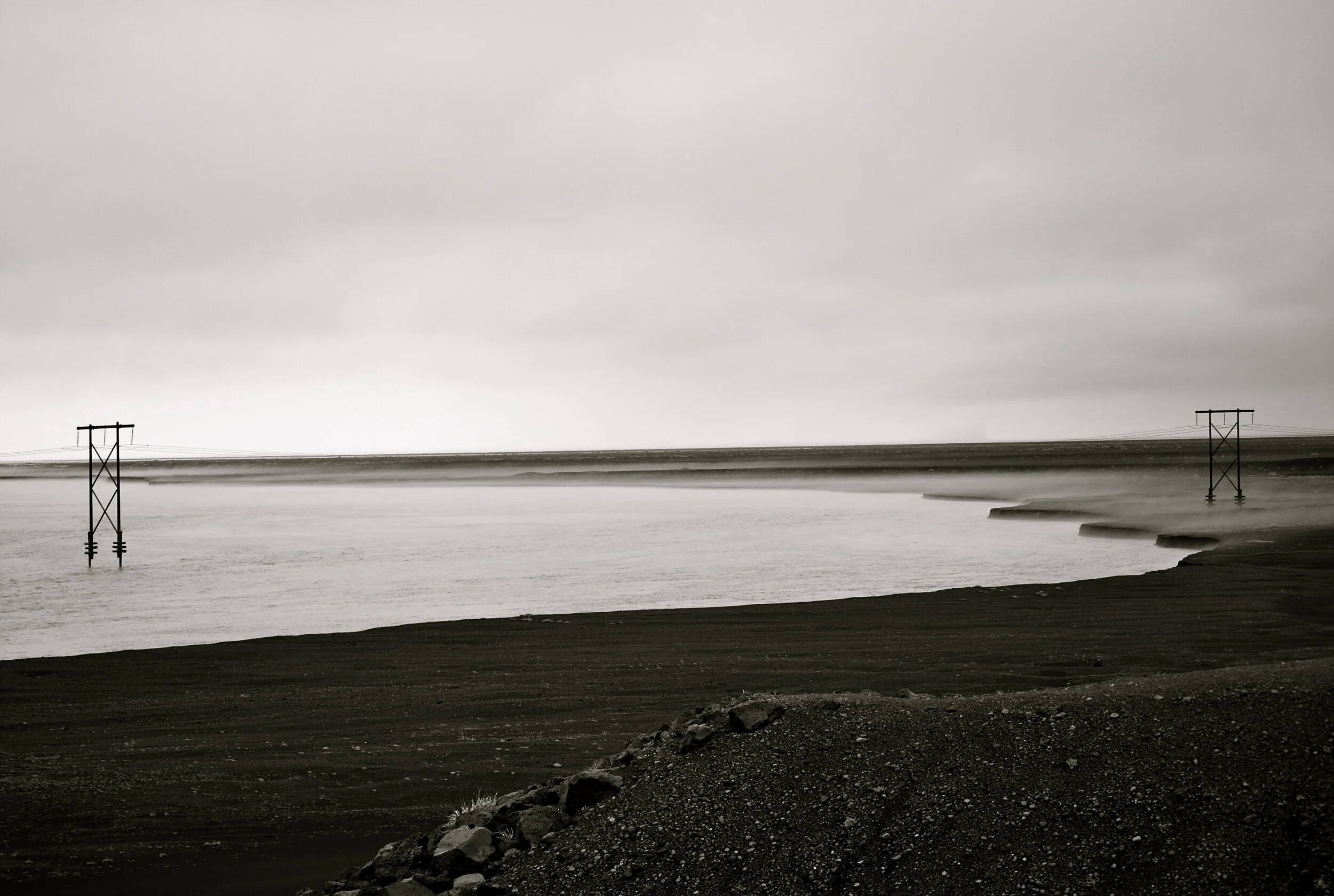The sun was barely up the morning we decided to shake the tent. Ash from Eyjafjallajökull’s eruption was still falling two months after the spectacle had ended. No matter how hard we tried, our eyes never caught sight of the seared snowflakes dancing toward the ground. Only in the crispness of an August morning did the fly on the tent reveal one of Isaac Newton’s grandest revelations; what goes up, must come down.
We drove to Gullfoss that afternoon. Rain licked the road. The car’s windshield wipers swayed out of tune with the songs on the radio. We were used to the rain by then. It had graced us nearly every day. Our bodies, permanently moist. Stepping out of the car it was hard to believe three weeks had passed since we first landed in Iceland. A time when our eyes grew wide trying to differentiate mountain from volcano, moss from grass, clear blue water from clear blue ice.
The rubber on our boots, worn from backcountry adventures, lost its grip as we climbed the stairs near Gullfoss’s bottom lip. It was the first time we felt ourselves unable to secure traction as our steps broke into gallops. Gaining speed along the footpaths, manmade scars, our spirits were inhabited by horses. Just as wild and just as free. We ran so fast we believed the rain wasn’t rain at all, but mist from Gullfoss. Mist mixed with our breath crystalizing in front of our faces.
And then we stopped.
I walked close to the edge, but not too close. I sat on the wet earth and listened to the water sculpting the rocks. A masterpiece in the making for thousands of years. As poetic as Rilke and as detailed as Rodin. Its mist, much like Eyjafjallajökull’s ash, was akin to particles of clay lingering in Ásmundur Sveinsson’s art studio.
On that edge, I listened to my heart and the thunder within. It brought me back to the time we passed through Iceland’s northeastern region and found thirty or more horses passing over a bridge near Goðafoss. Their gait was slow and methodic. Their eyes darted from the path ahead to the bumbling chaos below.
The edge brought me to the nights we slept on a teardrop island in the middle of a stream at the end of a small fall near Ísafjörður. We had hiked the hills that day, picking blueberries. A handful of horses grazed near a creek. We walked up and onward. We walked so far, we found a box with a book where we wrote our names beneath a list of other names. People who had been there. People who felt what we felt when our boots became waterlogged in marshy lands of arctic cotton and realized, everything in Iceland is connected.
